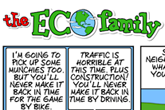- Home
- Comics
- Green Blog
-
Resources
Other Resources
-
Connect
A modern coastal-inspired renovation freshens up a West Vancouver family home
Kevin and Christy Young waited 10 years to renovate their home, and that was more than enough.
They didn’t want to wind up like those people who live in a house for decades and then fix it up right before selling, says Kevin. “We thought, we’re going to be in this house for at least another 10 years. So why don’t we do it now, and enjoy all that this house has to offer? Because we love where it is, and our kids love it.”
The 2003-built, 5,500-square-foot home in West Vancouver had served them and their three sons well, but it was feeling tired, too.
They got underway with a couple of smaller projects, fixing up the kitchen and a few bedrooms. But with two of the boys now in university and one finishing high school, the Youngs knew they should commit to a larger upgrade of the home’s main floor and walkout basement.
Enter Simply Home Decorating, and creative director Lori Steeves. The family conveyed their wish list and Steeves started forming a vision. “They’re a very busy bustling household, so Christy really wanted this feeling of calm in the decor,” she recalls.
Kevin is also part-owner of building-product manufacturing company — Woodtone — so Steeves decided to incorporate shiplap siding throughout. “That was my idea, not his,” she says. “But that led us to a very modern coastal esthetic, which Christy absolutely resonates with. She loves the water, and blues and greys.”
For her home office, Christy pictured this playing out as a serene retreat for her to work, relax and hang out with the family’s two golden retrievers. But the office space also got some uniquely feminine touches: “The house had a lot of angles and hard lines, and so in order to balance that in her study, we wanted to soften things a little,” says Steeves.
Bearing this in mind, Steeves paired a curved chaise longue with a custom teardrop-shaped ottoman. From there, she extended two existing storage built-ins to ceiling height, adding arches to flank a Masana stone fireplace.
A Samsung Frame TV displays artwork when not in use, positioned over the desk instead of the mantel to keep it from pulling focus. Floral drapes, cloud-patterned wallpaper on the ceiling and gold-flecked paintings by North Vancouver artist Donna Giraud enhance the feminine feel. Meanwhile, French doors create quiet and privacy, with glass allowing glimpses of action outside the room.
The heart of the home’s action is the great room, where family, kids and friend groups gather. And although the space is light-drenched and beautiful, with views of the city skyline and Lions Gate Bridge, its size and cathedral ceilings were a design challenge here, says Steeves.
“A lot of people think, oh, it’s a large room, it’s going to be so, so easy to work with — with lots of space for furniture. But the challenge in a large room is to give it a cosy and intimate feel despite its size,” she says.
To match the room’s proportions, Steeves started with a 12-by-12-foot sectional. A low-hung chandelier brings the space closer together, while a mix of wood tones, a nubby rug and a white brick fireplace create texture.
Steeves kept the home’s nearby dining room light and bright, adding a long dining table with benches at either end for extra seating when needed. Ocean and sea-urchin artwork, combined with shiplap on the lower walls, bring the coastal theme into focus here, while a natural-fibre chandelier ties in to oak flooring and furniture.
Downstairs, a walkout basement is now the ultimate hangout for the boys, with a full-sized home gym, TV lounge and bar-kitchen. “Gym equipment is not pretty, so I struggled to look for a layout that was going to give them the space that they needed,” says Steeves.
A faux concrete wall with a bank of mirrors in the back corner elegantly solves the problem, keeping the workout area visually separated from the rest of the space.
“It was a super-creative way to solve a problem of these three boys, who want to use a gym, and then incorporate that in with the TV,” says Kevin.
For the lounge zone, a comfy sectional faces an 85-inch TV, mounted on grooved black panelling to make the electronics recess visually.
At the other end of the space, a tidy modern bar replaced a ’90s Irish pub-style time capsule. Linear wood panelling overhead turns a bulkhead into a design feature, set off with nautical lights for a hint of the coastal vibe. Similar panelling on the island below takes on a rich matte black tone for contrast.
With this phase of their renovation complete, the Youngs recently embarked on yet another reno, upstairs, with Steeves again leading design. Between all the changes, they’re achieving their goal of longevity, and enjoying the home not later, but today, says Kevin.
“I don’t ever want to leave this house,” adds Christy. “[Lori] created spaces that make me really happy. Whether it’s the gym area with the TV for the boys, or the living room or the office, I walk into each space and it’s like, oh, I love it in here.”
Project management and design: Simply Home Decorating
Related
Categories: Organic Gardening
Pages
- « first
- ‹ previous
- 1
- 2
- 3
- 4

















